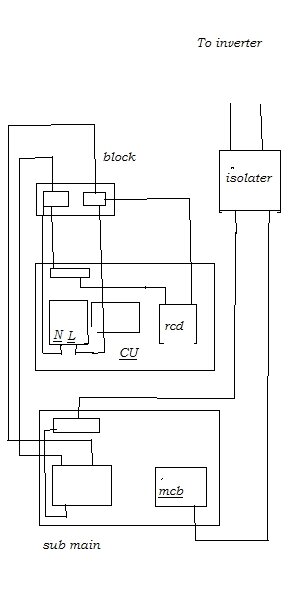T
T0M0
Hi All,
I suspect this has been covered many times but I cannot find a definitive answer.
I am undertaking my first install which will be used for assessment. The inverter is a SB2500 with electrical separation so does not need RCD protection. My AC cable to the loft will be buried in, so Part P requires an RCD.
I believe a double pole 100mA class A or AC is required, as a 30mA may trip due to fluctuations. My intention for this and other installs is to install a separate CU with the above RCD feeding a 16A MCB as standard. Does this sound correct?
Also, I am mounting the inverter in the loft onto firerated plywood attached to the trusses. Does this sound good and are there any issues with noise with the SMA inverters?
Sorry if this is repetitive and any help appreciated - Thanks for reading,
T0M0
I suspect this has been covered many times but I cannot find a definitive answer.
I am undertaking my first install which will be used for assessment. The inverter is a SB2500 with electrical separation so does not need RCD protection. My AC cable to the loft will be buried in, so Part P requires an RCD.
I believe a double pole 100mA class A or AC is required, as a 30mA may trip due to fluctuations. My intention for this and other installs is to install a separate CU with the above RCD feeding a 16A MCB as standard. Does this sound correct?
Also, I am mounting the inverter in the loft onto firerated plywood attached to the trusses. Does this sound good and are there any issues with noise with the SMA inverters?
Sorry if this is repetitive and any help appreciated - Thanks for reading,
T0M0









